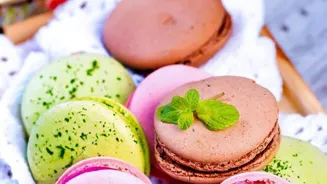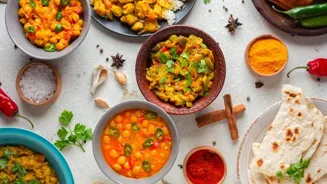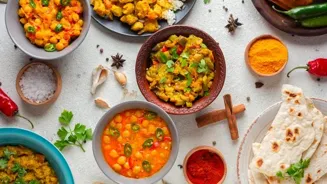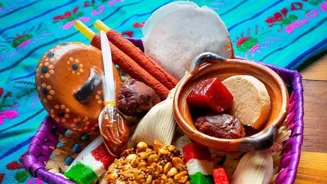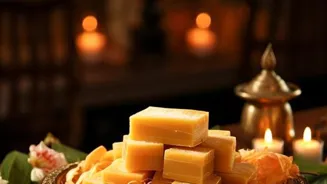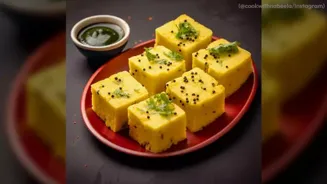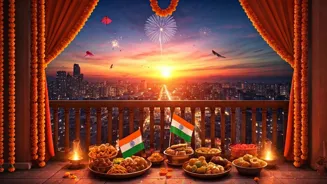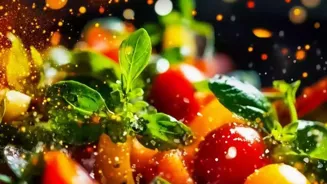Discover the sweet world of Indian desserts! Dive into 10 delightful recipes to satisfy your sweet tooth. Read more for a flavorful journey through the rich landscape of Indian mithai
Namaste, dessert lovers!
Are you ready to embark on a delightful journey through the sweet landscape of India? Indian desserts, or 'mithai' as we lovingly call them, are a symphony of flavors, textures, and aromas.
From the milky richness of North Indian treats to the coconutty goodness of the South, there's a mithai to please every palate. Forget all the complicated recipes you've seen online. Today, we're handing you a simple guide to 10 Indian desserts that you can easily make at home.
Get ready to impress your family and friends with your newfound mithai-making skills, because your sweet tooth is in for a real treat!
Gulab Jamun: The King of Indian Sweets
Let's begin with the undisputed king of Indian sweets – Gulab Jamun. These soft, spongy, deep-fried milk balls soaked in rose-flavored sugar syrup are pure heaven. The recipe may seem a bit intimidating, but trust us, it's easier than you think.
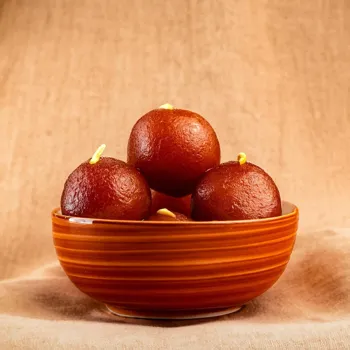
You'll need milk powder, maida (all-purpose flour), a pinch of baking soda, ghee (clarified butter), and milk to make the dough. Fry these small balls until golden brown, and then gently drop them into a simmering sugar syrup infused with cardamom and rosewater.
The key is to fry them on low heat so the centre cooks properly. Serve them warm with a generous dollop of vanilla ice cream for an extra indulgent treat. Don't be afraid to experiment with the flavor of the syrup. A hint of saffron or kewra water can also add a unique touch.
Making Gulab Jamun is a labor of love, but the reward is well worth the effort. These tempting treats are a must-have for any festival or celebration, and they're guaranteed to disappear in seconds.
Jalebi: The Crispy Curled Delight
Next up is Jalebi, a crispy, syrupy, and vibrant orange-colored dessert that's as visually appealing as it is delicious. Made from a fermented batter of maida and besan (gram flour), jalebi is traditionally fried in a spiral shape and then soaked in sugar syrup.
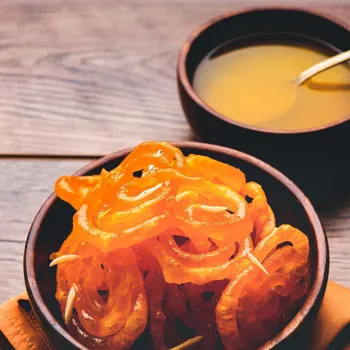
The fermentation process is what gives jalebi its unique tangy flavor. To achieve the perfect crispness, fry the jalebis on medium-high heat until golden brown and then immediately dunk them in warm sugar syrup.
Serve them hot with a spoonful of rabri (thickened sweetened milk) for a truly indulgent experience. Making jalebi might require a bit of practice to get the shape right, but don't be discouraged. Even oddly shaped jalebis taste equally delicious.
You can use a piping bag or a clean cloth with a small hole to pipe the batter into the hot oil. Jalebi is a popular street food in India and is often enjoyed as a breakfast treat or an evening snack.
Kheer: The Creamy Rice Pudding
Kheer, a creamy rice pudding, is a comforting and classic Indian dessert that's perfect for any occasion. Made with rice, milk, sugar, and flavored with cardamom and nuts, kheer is a celebration of simplicity and taste.
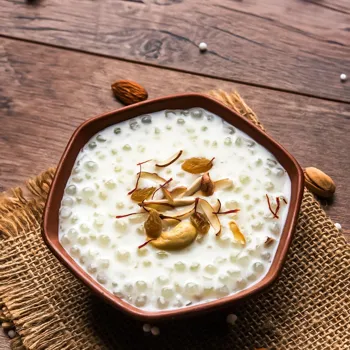
The key to a perfect kheer is to use full-fat milk and slow cook the rice until it's soft and creamy. You can use any type of rice, but basmati rice is a traditional favorite for its aroma and texture.
As the kheer simmers, the milk thickens and the rice absorbs the sweet flavors of the sugar and cardamom. Garnish with chopped nuts like almonds, pistachios, and cashews to add a touch of crunch and elegance.
Kheer is often made during festivals and religious ceremonies, and it's a symbol of prosperity and good fortune. It can be served hot or cold, and it's equally delicious either way. Don't hesitate to experiment with different flavors and toppings.
A few strands of saffron or a sprinkle of rose petals can elevate your kheer to another level.
Barfi: The Fudge-like Sweet
Barfi, a fudge-like sweet made with condensed milk, sugar, and various flavorings, is a versatile and popular Indian dessert. There are countless variations of barfi, each with its unique flavor and texture.
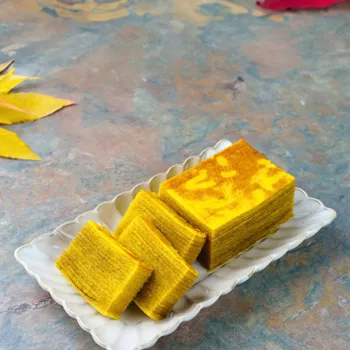
Some popular types include milk barfi, coconut barfi, besan barfi (gram flour barfi), and kaju barfi (cashew barfi). Making barfi involves cooking the ingredients together until they reach a thick, fudge-like consistency.
The key is to stir constantly to prevent the mixture from sticking to the bottom of the pan. Once the barfi is cooled and set, it can be cut into squares or diamonds and decorated with silver leaf (varq). Barfi is often given as a gift during festivals and celebrations.
It's a symbol of love, friendship, and good wishes. Don't be afraid to get creative with your barfi flavors. You can add chopped nuts, dried fruits, spices, or even chocolate to customize your barfi.
Halwa: The Rich and Decadent Treat
Halwa is a rich and decadent Indian dessert made with flour, ghee, sugar, and water. Similar to barfi, there are many variations of halwa, each with its unique taste and texture.
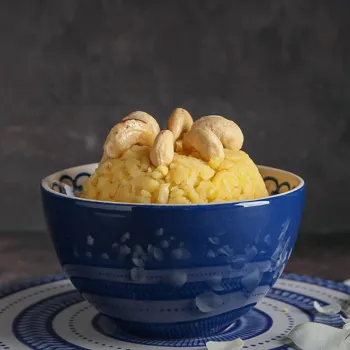
Some popular types include sooji halwa (semolina halwa), atta halwa (whole wheat flour halwa), and gajar halwa (carrot halwa). Making halwa involves roasting the flour in ghee until it turns golden brown and fragrant.
Then, sugar and water are added, and the mixture is cooked until it thickens and becomes glossy. The key is to stir constantly to prevent the halwa from burning. Halwa is often garnished with chopped nuts and dried fruits. Halwa is made during festivals, religious ceremonies, and special occasions.
It's a symbol of abundance and prosperity. You can customize your halwa by adding different flavors, such as cardamom, saffron, or rosewater.
Rasgulla: The Spongy Cheese Balls in Syrup
Rasgulla are soft, spongy cheese balls cooked in light sugar syrup. A Bengali mithai, it's a treat for soft sweet lovers. With chhena, semolina and sugar, it can be easily prepared at home. They melt easily on the buds.
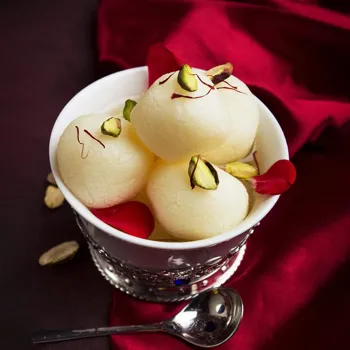
The key is to create a spongy texture with chhena and making sure to strain the chhena and mash properly with flour. This brings smoothness and the correct texture to the balls. Then they can be shaped in round shape and put into a medium boiling sugar syrup.
The sugar level should be maintained to ensure that the balls are not overboilded to break.
Serve it cool, Rasgulla are a dessert choice.
Make sure to be patient and serve it cold.
Sandesh: Bengali Cheese Dessert
Sandesh is a classical sweet dish and popular in Bengal, made with cottage cheese (Chhena) and infused with date palm jaggery or sugar.
The procedure involves combining the two ingrediants and cooking them till they stick together.
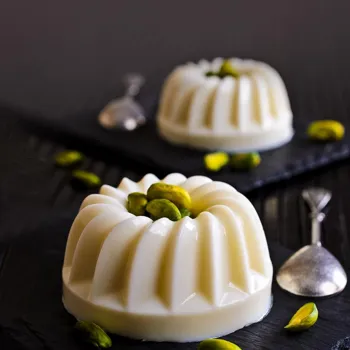
Once done, it can be moulded into different sizes or just served at it is.
Various add ons can be implemented such as cardamom , saffron to bring different aroma and taste.
It is very important to use fresh cottage cheese to derive the correct Sandesh flavor.
There are also several Sandesh alternatives to be experimented. Sandesh can be prepeared with various fruit flavors too.
Mysore Pak: A South Indian Delight
Mysore Pak is a classical, rich, sweet dish and very popular in South India that is prepared with gram flour, ghee and sugar.
The process involes dissolving sugar in water to form a syrup, then roasted gram flour and ghee is slowly added.
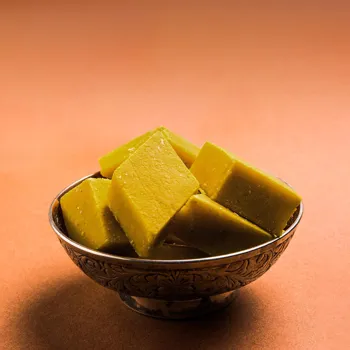
The ingredients all come together to form a brittle, fudge like texture.
The ghee makes the recipe really smooth and brings an unique rich texture to the dish.
Mysorepak is often prepeared and distributed in festivals and special occassions in South India.
Make sure ingredients are proportionally measured to ensure the correct blend to derive a perfect Mysorepak.
Pedha: Milk based fudge
Pedha is a classic Indian sweet made with condensed milk solids, also called khoya or mawa. It is similar to barfi but has a richer flavor and a softer texture. Pedha is often flavored with cardamom, saffron, or nuts.
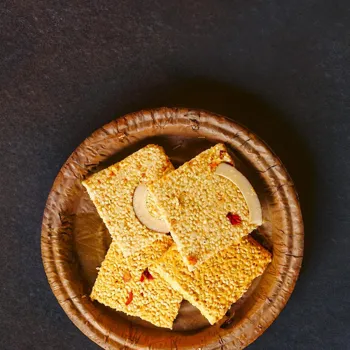
Making pedha involves slow-cooking khoya over low heat until it thickens and starts to caramelize. Sugar is then added and mixed well. The mixture is then shaped into small rounds or squares and decorated with nuts or silver leaf.
Pedha is a popular sweet for festivals and celebrations.
It is also often given as a gift.
The key to good pedha is using high-quality khoya and cooking it slowly over low heat. This will help to ensure that the pedha has a smooth, creamy texture and a rich flavor.
Try to cool pedha well and make sure it is cooled before you shape it into rounds.
Cardamom brings a new taste.
Modak: A Ganesh Chaturthi Special
Modak is a sweet dumpling popular in Maharashtra, India. It is traditionally made with rice flour dough filled with a mixture of grated coconut, jaggery, and cardamom. Modak is a special offering to Lord Ganesha during the Ganesh Chaturthi festival.
Making modak involves preparing the rice flour dough and the coconut-jaggery filling. Small portions of dough are then flattened and filled with the coconut mixture. The edges are then pleated together to form a dumpling shape. The modaks are then steamed until cooked.
Modak is a delicious and festive sweet that is enjoyed by people of all ages. It is a symbol of good luck and prosperity.
Make sure to work really gently with fingers when you are shaping MODAK in desired shape. There are alternate methods too, where MODAK shaping tools are used.
There you have it – a guide to your delightful sweets. So get into the kitchen and let the mithai-making magic begin! Don't worry if your first attempt isn't perfect.
The joy of cooking Indian desserts lies not just in the final product, but also in the process of creating something delicious and sharing it with loved ones. Happy cooking, and may your life be as sweet as these mithai!
AI Generated Content. Glance/InMobi shall have no liability for the content